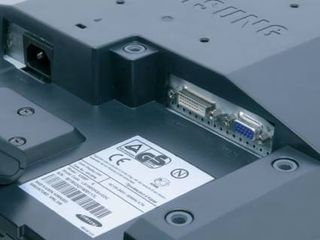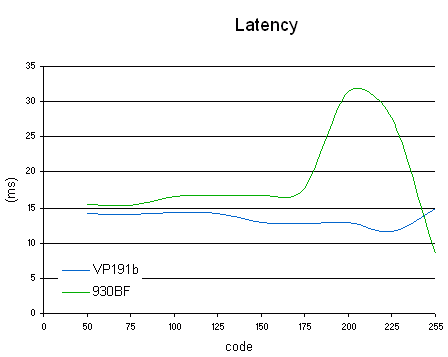Do The New 19" LCDs Pass Muster?
Equipment

Again, ho-hum. There's VGA and DVI, and a built-in transformer. Not bad, but a little disappointing compared to some monitors we've tested.
The colors were very nice. It really looks as if accelerated TN+film is catching up with accelerated MVA.
| Black spot | White spot | Contrast |
|---|---|---|
| 0.34 | 188 | 553: 1 |
The black level is very good. The brightness is still high, but better than on most LCD panels. Monitors that can operate properly at under 200 nits are rare as hen's teeth on the market, even though the best brightness level for users' eyes would be somewhere around 140 nits. The contrast is excellent.
Contrast was also very stable, varying less than 10% over the entire brightness range. That's a very good result.
Spatial Uniformity
Even though all the values were fairly close together, the profile wasn't good at all. When screening a very dark image, a good number of halos of light were visible, especially at the lower left corner. They'll be visible in the black bands when screening letterbox movies, which is a disappointment.
Overdrive Overdriven
Stay on the Cutting Edge
Join the experts who read Tom's Hardware for the inside track on enthusiast PC tech news — and have for over 25 years. We'll send breaking news and in-depth reviews of CPUs, GPUs, AI, maker hardware and more straight to your inbox.
You want Overdrive? You got it. Right in your face, and no subtlety about it! Obviously, you can expect the consequences.

Here's what happens when Overdrive is poorly managed. The lack of precision in the response results in abysmal latency values. But note that with Overdrive, abysmal values don't mean that remanence is excessive on the 930BF. What they do mean is that the accuracy is just not there, and in this case, video noise is the result. On the other hand - and the graph doesn't show this - the fall time is often under a millisecond, which means that a white object on a dark background, like a mouse cursor, won't leave the slightest trail. That's an enjoyable experience, and ultimately the 930BF is even a little more responsive than the VP191b. But at what cost?
Most Popular

